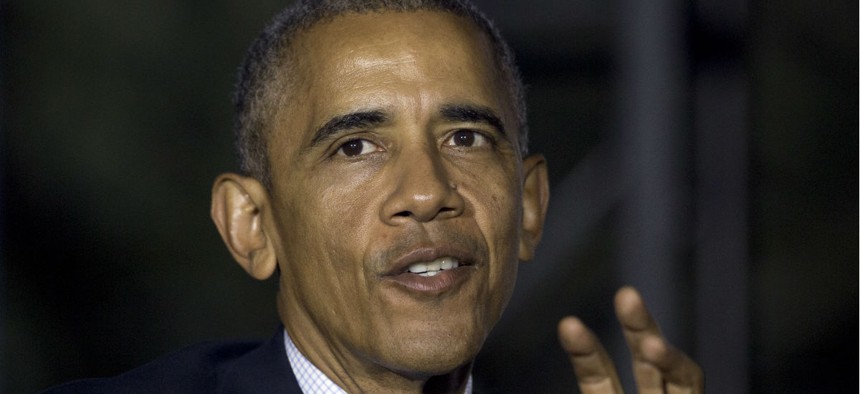
Coordination was largely effective in the first year of President Obama’s enunciated policies on hostage recovery activities. Carolyn Kaster/AP
Government’s Recent Hostage Recovery Activities Deemed Largely Effective
Several dozen were recovered in first year since Obama clarified policies, counterterrorism agency’s report notes.
The government’s attempts to rescue Americans taken hostage overseas while keeping their stateside families in the loop requires a multi-agency feat of coordination.
In the first year of President Obama’s enunciated policies on hostage recovery activities, that coordination was largely effective, with several dozen hostages obtaining their freedom, according to a mandatory 12-month status report released on Sept. 30 by the National Counterterrorism Center.
Interviews with 32 officials and 20 families, including former hostages, however, resulted in 17 recommendations to address problems such as slow filling of jobs, delays in declassifying suitable documents and fears among hostages’ families that the newly created federal entities will not endure.
In June 2015, Obama signed an executive order and a related presidential policy directive setting up an interagency Hostage Response Group, a Hostage Recovery Fusion Cell and an Office of the Special Presidential Envoy for Hostage Affairs. They are staffed by the National Counterterrorism Center; the FBI; and the departments of State, Defense, and Justice.
At the same time, Obama softened an earlier prohibition against families of hostages raising money to pay kidnappers’ ransoms, now tolerating some private efforts while continuing the government’s official refusal to make such payments, which experts warn would encourage future hostage-taking.
Many families who find themselves in such a crisis have expressed frustration with the government for inconsistent communication and what can sometimes appear to be an absence of effort to get the hostages freed.
The report said the Hostage Recovery Group, which meets biweekly, “at the 12-month-mark….has successfully recovered several dozen hostages, wrongfully or unlawfully held detainees and victims of kidnap, all while adhering to the USG no-concessions policy on ransom payments. Amidst this clear progress,” it added, “some processes and procedures established in the past year are still being formalized/institutionalized.”
It cautioned against letting up on the ongoing effort to sustain “mutually beneficial and positive relationships with the families of hostages,” warning that “in some areas, achievements to date could be eroded or reversed without consistent senior policymaker attention.”
The families tend to worry that hostage recovery entities will atrophy and be ignored by future officials.
Among the report’s 17 findings and recommendations are statements that not all agencies have met their staffing requirements—the Defense Department, for example, has assigned only an interim director to the Hostage Recovery Fusion Cell, the report noted.
That cell, at the same time, has increased the government’s effectiveness in developing coordinated responses to inquiries on hostage situations from Congress and the news media, the report said.
Some agencies, however, still experience “significant delays in declassifying information.”
Hostage Recovery Fusion Cell representatives should continue educating each other about the government’s capabilities and available expertise in the array of hostage situation-related topics, the report said. Families should be relieved of a “misperception” that Third Party Advocates are not permitted to listen in on phone calls, visits and, within limits, intelligence briefings from the government’s Family Engagement Teams.
Responding to the report, National Security Council spokesman Ned Price said in a statement, “The report concludes that last year's institutional and policy changes have had a positive impact on hostage recovery efforts. Where the report identifies work yet to be done or improvements still to be made, departments and agencies have already begun work to implement the recommendations and will continue to seek ways to improve our hostage recovery efforts.”







